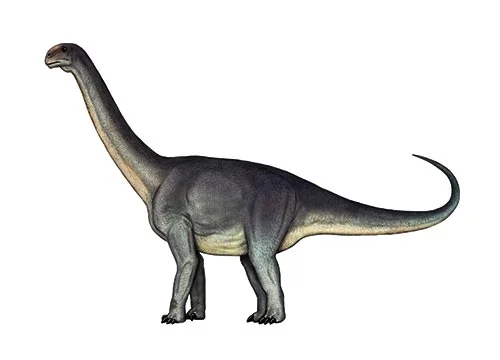Kotasaurus (Kota lizard)

Koe-tah-sore-us
P. Yadagiri - 2001
Herbivore
Estimated 10 meters long
Sauropod
K. yamanpalliensis (type)
India - Kota Formation
Early Jurassic, 180 million years ago
Kotasaurus Facts
Kotasaurus is a genus of sauropod dinosaur that lived during the Early Jurassic period, around 180 million years ago. It was named after the Kota Formation in India, where its fossils were first discovered.
Kotasaurus was a relatively small sauropod, measuring around 10 meters (33 feet) in length and likely weighing around 2-3 metric tons. It had a long neck and tail, and a large body supported by four sturdy legs. Its limbs were straight and pillar-like, which is a characteristic feature of early sauropods.
One of the most distinctive features of Kotasaurus was its unusual teeth. Unlike other sauropods, which had simple, peg-like teeth for grinding vegetation, Kotasaurus had more complex teeth with multiple cusps and ridges. This suggests that it may have had a more specialized diet, perhaps feeding on tougher plant materials.
Kotasaurus lived during a time when India was still connected to Africa and South America as part of the supercontinent Gondwana. It would have shared its environment with other early dinosaurs, including small carnivores and other herbivorous sauropods.
Despite its relatively small size and unusual teeth, Kotasaurus is an important example of the early evolution of sauropod dinosaurs. Its fossils have provided important insights into the anatomy and ecology of these fascinating creatures, and have helped scientists better understand the diversity of life that existed during the Early Jurassic period.



